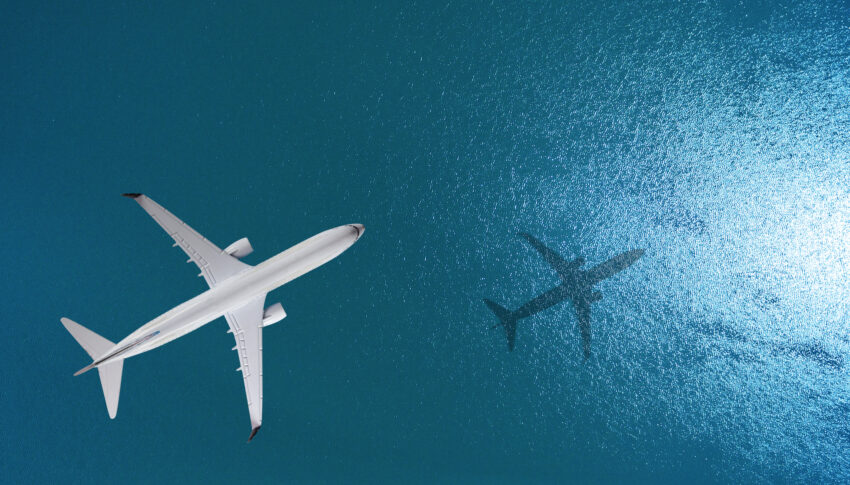The benefits of live satellite tracking are many — improved safety, more efficient operations, better information — but a step change has come with the recent adoption of new satellite-based ADS-B tracking. Conclusion of hard work within the industry before and during the COVID-19 pandemic now means that any flight at 33,000 feet or below can choose any route across the North Atlantic, avoiding the decades-old North Atlantic tracks system and optimising instead for the origin, destination and headwinds.
The North Atlantic Tracks — technically North Atlantic Organised Track System, or NAT-OTS — are perhaps the most famous of aviation’s elegant technical solutions, in this case to a problem stemming from the age of ocean liners: how to create highways through a busy sea, and later a busy series of air routes.
Later, what is now NAT-OTS was optimised for headwinds and tailwinds, funnelling traffic flying at common altitudes through entrance and exit waypoints set daily between Gander in the west and Shanwick in the east, separated vertically and horizontally.
But that’s not the most efficient way for every flight route, with UK air navigation service provider NATS citing an airline study that concluded every minute of extra flight time costs an airline £51 (about US$67). Add on the environmental benefits of flight optimisation and air traffic management is on to a winner.
Jacob Young, NATS operational performance manager, and an oceanic group supervisor there, tells us that, starting in March 2022, “anyone flying at Flight Level 330 and below has been able to do so entirely free from the OTS structure.”
In essence, while flying out of the OTS structure has never been restricted in terms of flight planning, some airlines have prohibited flight plans that cross tracks, and air traffic controllers are very likely to require significant changes to altitudes and routings.
The crucial technological leap to achieve the OTS-free milestone came right before COVID-19 struck, with the 2019 entry into service of satellite-based tracking in near-realtime from Aireon, Young says: “we went from a procedural environment where we would receive aircraft positions every 14 minutes to one where our controllers see an update every 7-8 seconds.”
As a result, the minimum separation has shrunk from around 40 nautical miles to an impressive 14, which means more aircraft can optimise routes in real time for fuel, time and emissions.
Even more so, this tracking “delivered a very clear safety benefit in terms of how quickly we can now intervene if anything is not going to plan,” Young explains. “It has also allowed us to radically reduce the vast separation standards that the previous environment demanded.”
Much of the acceleration of this work was enabled by the massive drop in transatlantic traffic, from some 1700 flights a day before COVID to as few as 200 on certain days in 2020.
Levels of some 500 flights a day in 2021 combined with the benefits of real-time surveillance to provide for twenty days that year without publishing tracks, meaning airlines could plan their routes in the most optimised ways with a minimum of traffic.
“We’re now working with 15 of them to analyse the results and simulate ‘OTS Nil’ on busier traffic days to understand if the benefits to them in terms of time, CO2 emissions and fuel burn would make a permanent change worthwhile,” Young tells us.
In the meantime, any flight planner can now file for any route at 33,000 feet or below, meaning that they can optimise for (say) an uncommon flight like Chicago-Helsinki, rather than having to join the tracks that are developed to cater for the most common routes, like New York-London.
To achieve this, NATS worked with direct counterpart NAV CANADA, alongside the North Atlantic OTS Development Focus Group, comprising airlines, trade body IATA, other air navigation service providers, and industry participants.
The future, too, is rosy. “From our perspective,” Young says, “it’s certainly possible to make the North Atlantic completely track-free with some relatively minor procedural and system changes, but it needs to be a collaborative decision which is led by our airline customers’ preference. That analysis work is on-going, but ultimately we need to understand if the benefits to them in terms of time, CO2 emissions and fuel burn would make a permanent change worthwhile.”
“Ultimately,” Young sums up, “none of this would be possible without the Aireon service. It has been totally transformational, coupled with the widespread adoption of ADS-B across almost all operators.”

Author: John Walton
Published: 26th April 2022



